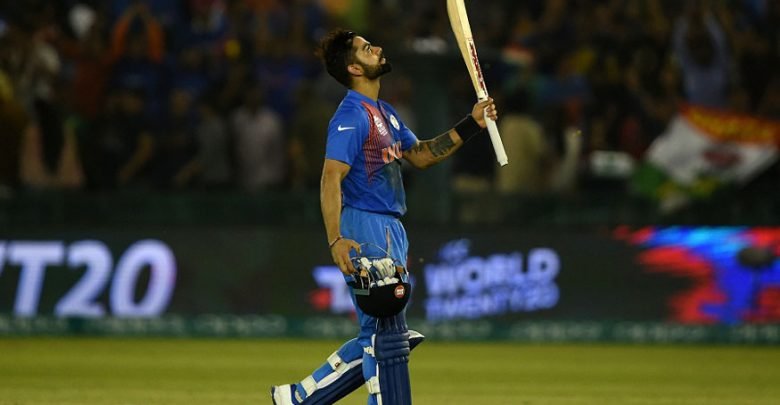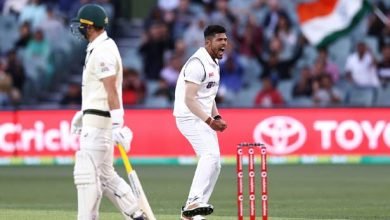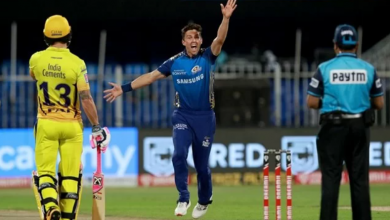CRICKETENGLISHLATEST UPDATESNEWS
Virat Kohli, Andre Russell Headline Best XI of 2016 World T20; No Place for Carlos Brathwaite

April 3, 2016, Kolkata: West Indies needed 19 off the last over. England were favourites. But a certain Carlos Brathwaite smashed Ben Stokes for 4 successive sixes. Game. Set. Match. Tournament!
West Indies lifted their second WT20 title becoming the first team to lift the coveted trophy twice.
There were some great individual performances in the tournament. We look at the WT20 2016 XI based not only on aggregates of runs and wickets but also on the context of the performances, match situation, relative strike rate, comparative contribution by team-mates and importance of the match.
The WT20 2016 XI (Note: A minimum of 3 matches considered)
1. Usman Khawaja
2. Jason Roy
3. Virat Kohli (C)
4. Marlon Samuels
5. Jos Buttler (wk)
6. Shane Watson
7. Andre Russell
8. David Willey
9. Mustafizur Rahman
10. Samuel Badree
11. Imran Tahir
Usman Khawaja gave Australia the impetus at the start in all the 4 innings he batted in the tournament. Although he did not really score big he was still the highest scorer for Australia and his strike rate of 137.5 reduced the pressure on the middle order and gave them a platform.
Jason Roy produced three match-winning knocks scoring at a blitzkrieg rate demolishing the opposition attack – 43 off 16 balls against South Africa, 42 off 39 against Sri Lanka and finally 78 off 44 against New Zealand in the semi-final in Delhi.
Virat Kohli was the highest impact batsman of the tournament scoring 273 runs in just 5 innings. He came out to bat at 14 for 1 against Pakistan. India lost Dhawan and Raina in quick succession and were reeling at 23 for 3 but Kohli absorbed the pressure of falling wickets and remained unbeaten on a brilliant 55 off just 37 deliveries. He followed this with another chasing masterclass – an unbeaten 82 off just 51 deliveries against Australia single-handedly taking India to victory.
He scored almost 41% of the total runs scored by India in the tournament and his strike rate of 146.77 was several notches higher than the average strike rate of all the other number 3 batsmen in the tournament (115.86).
Marlon Samuels produced his best for when it mattered most – a sensational match-winning unbeaten 85 off just 66 deliveries in the final against England in Kolkata. This quality of rising to the occasion on the big-stage was not new to Samuels. He had produced the defining performance with the bat – 78 off 56 deliveries – in a low scoring WT20 final against Sri Lanka in Colombo in 2012. Two Man of the Match performances leading his team to victory in two WT20 finals cannot just be a coincidence!
Jos Buttler smashed five 20-plus scores in the tournament, all at a strike rate of 150-plus. His overall strike rate of 159.16 was the highest in the WT20 (min.1 20 runs). He played a crucial role at number 4 and 5 giving the innings the flourish in the middle-order and death.
Shane Watson produced two defining performances – one with the bat and ball each. After a brilliant opening spell against Bangladesh in which he got the wickets of Soumya Sarkar and Sabbir Rahman within the powerplay, he hammered 44 off 21 deliveries against Pakistan giving the innings the necessary flourish at the death.
Andre Russell blasted an unbeaten 43 off just 20 deliveries to take West Indies to the final upsetting hosts India in Mumbai. He was also the joint highest wicket-taker for the West Indies with 9 wickets.
David Willey was the highest impact fast bowler of the tournament. No pacer took more wickets than his 10. After being taken apart in his first couple of matches by West Indies and South Africa, he showed character to come back into the tournament with 3 significant performances.
Mustafizur Rahman made an impact in all the 3 matches he played in the tournament. His best figures came against New Zealand (5-22 in 4 overs) albeit in a losing cause.
Samuel Badree gave three significant performances with the ball – 3-12 against Sri Lanka, 3-14 against Afghanistan and last but not the least 2-16 in 4 overs against England in the final at Kolkata. What made his performance even more impactful was the fact that he opened the bowling and bowled within the powerplay in all these matches – thus not only was he brilliantly restrictive but also picked the wickets of top opposition batsmen pegging them back early in the match. Badree got the wickets of Roy and Morgan and bowled a maiden in the powerplay in the final – this went a long way in keeping England to a moderate total.
Imran Tahir was the most restrictive bowler of the tournament with an economy rate of just 5.18. His best performance (2-13 in 4 overs) came against the West Indies in Nagpur, albeit in a losing cause.





